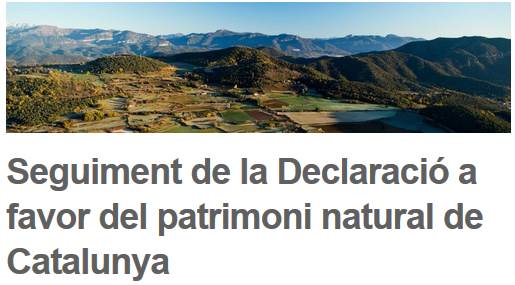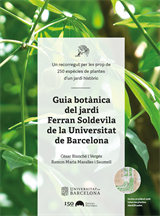| Com cal conservar espècies híbrides o pures? |
| divendres, 6 de juliol de 2012 09:57 | |||
|
Jordi López-Pujol, Núria Garcia-Jacas, Alfonso Susanna, Roser Vilatersana (2012) Should we conserve pure species or hybrid species? Delimiting hybridization and introgression in the Iberian endemic Centaurea podospermifolia Centaurea podospermifolia és un endemisme d'àrea reduïda a les muntanyes del sud de Catalunya, que s'hibrida amb un altre congènere, C. cephalariifolia, d'àrea més àmplia. Els híbrids formats es coneixen com a C. x loscosii i conformen un grup complex, tetraploide amb gran dificultat de comprensió. L'estudi de Jordi López-Pujol, Alfonso Susanna, Núria Garcia i Roser Vilatersana ha detectat algunes poblacions de C. podospermifolia que presenten introgressió (als Ports), mentre que d'altres romanen "pures" (a Cardó). Els resultats de l'article indiquen que la introgressió comporta un increment de la diversitat genètica intrapoblacional, mentre que les poblacions "pures" presenten nivells molt baixos de variació genètica. Atès que es tracta de dues unitats amb esdevenidors evolutius clarament diferenciats, l'estudi recomana una gestió també diferenciada, per separat, de les àrees pures i de les àrees híbrides.
Centaurea podospermifolia (Foto: Laia Barres) Resum / Abstract Natural hybridization can be a serious threat to rare and endangered species because of the risk of extensive genetic swamping or assimilation. Hybridization, however, can be beneficial for rare species as it increases their genetic diversity, which in turn may improve their fitness and confer adaptive potential. Centaurea podospermifolia is a narrowly endemic, threatened, tetraploid species occurring only in two mountain ranges of northeastern Spain. This species may produce a highly unstable homoploid hybrid (Centaurea x loscosii) with the more widespread Centaurea cephalariifolia. Allozymes and nuclear DNA sequences (ETS and Agt1) were used to test whether C. podospermifolia populations have undergone hybridization or introgression with C. cephalariifolia, which should have left an imprint in the genetic structure of the former. Nuclear DNA sequencing indicates that all the populations from one mountain range (the Ports Massif) are introgressed, whereas those from the second (the Cardó Range) should be regarded as ‘pure’. Genetic variability detected in C. podospermifolia is low for a tetraploid species, and the occurrence of population bottlenecks may have played a role in this lack of diversity. Populations from the Ports are more variable than those from Cardó, the lower genetic variability observed for Cardó populations being unequivocally related to a lack of genetic material from C. cephalariifolia. We suggest that a management plan for C. podospermifolia should address the conservation of both the pure-bred and the introgressed populations. Més informació
|
|||
| Darrera actualització de divendres, 6 de juliol de 2012 10:49 |


















